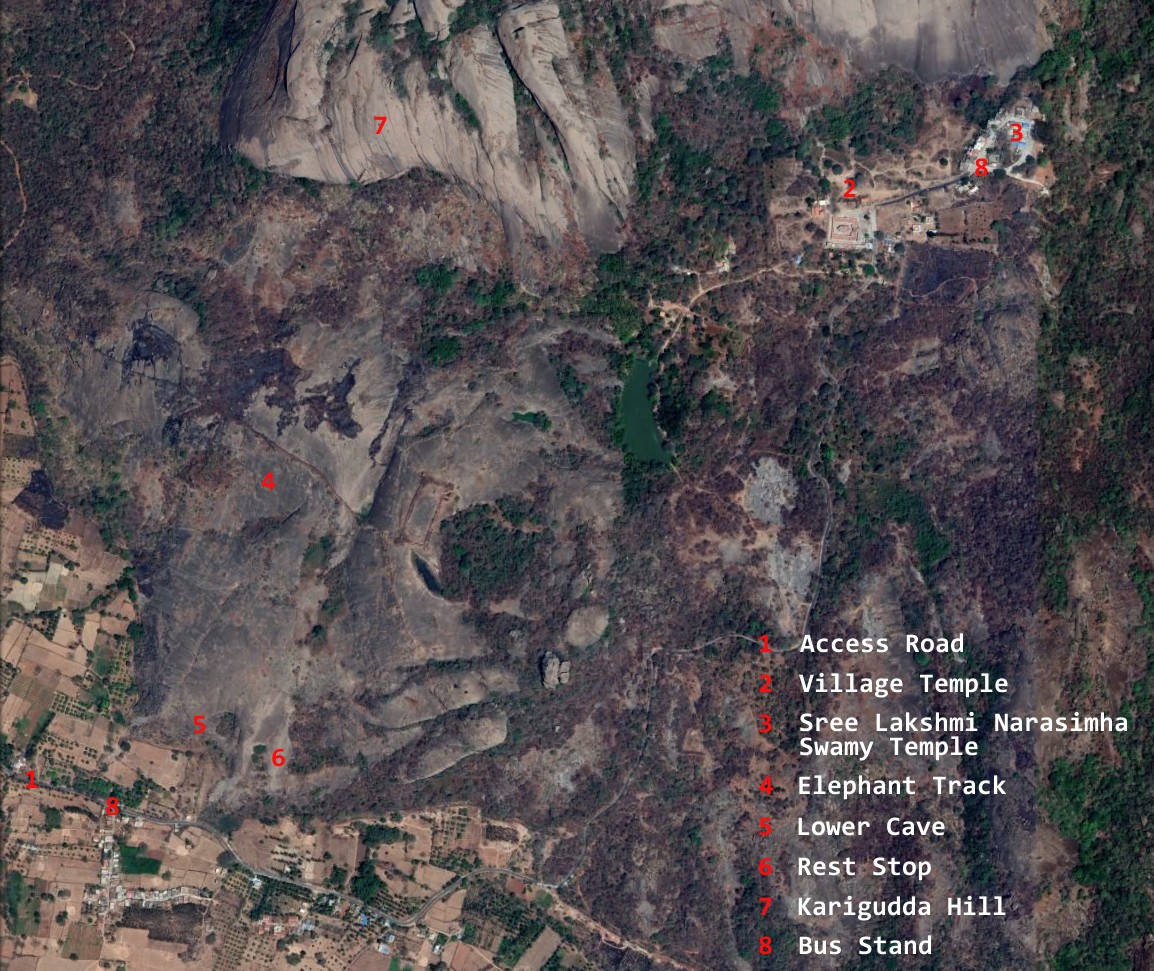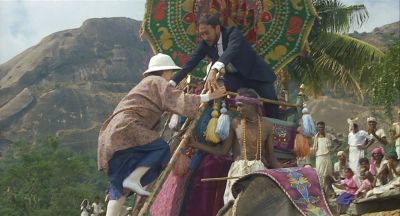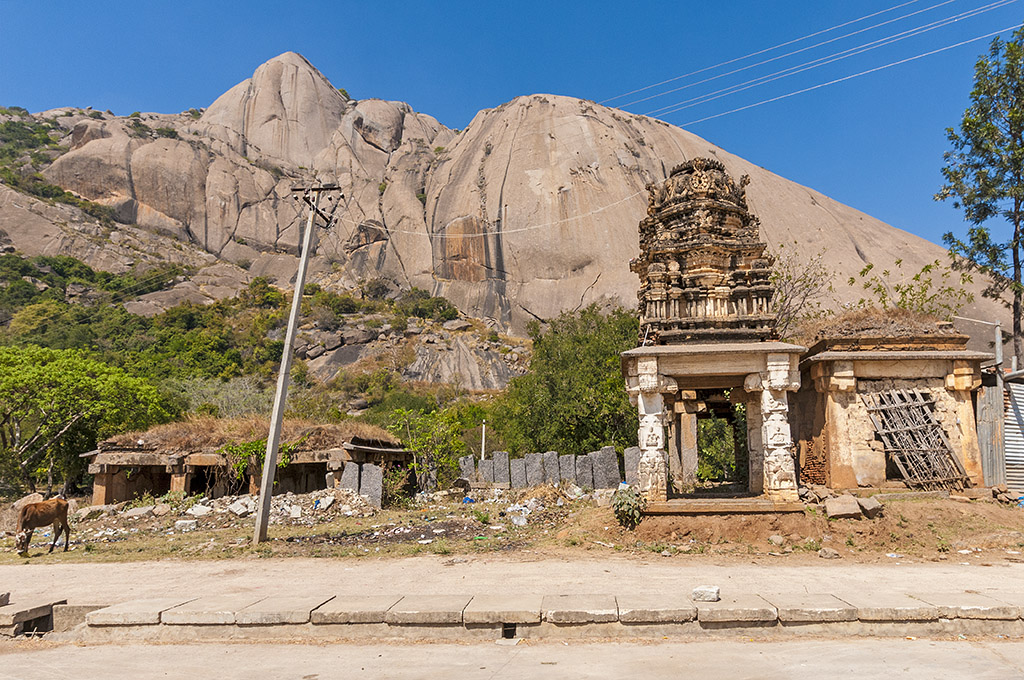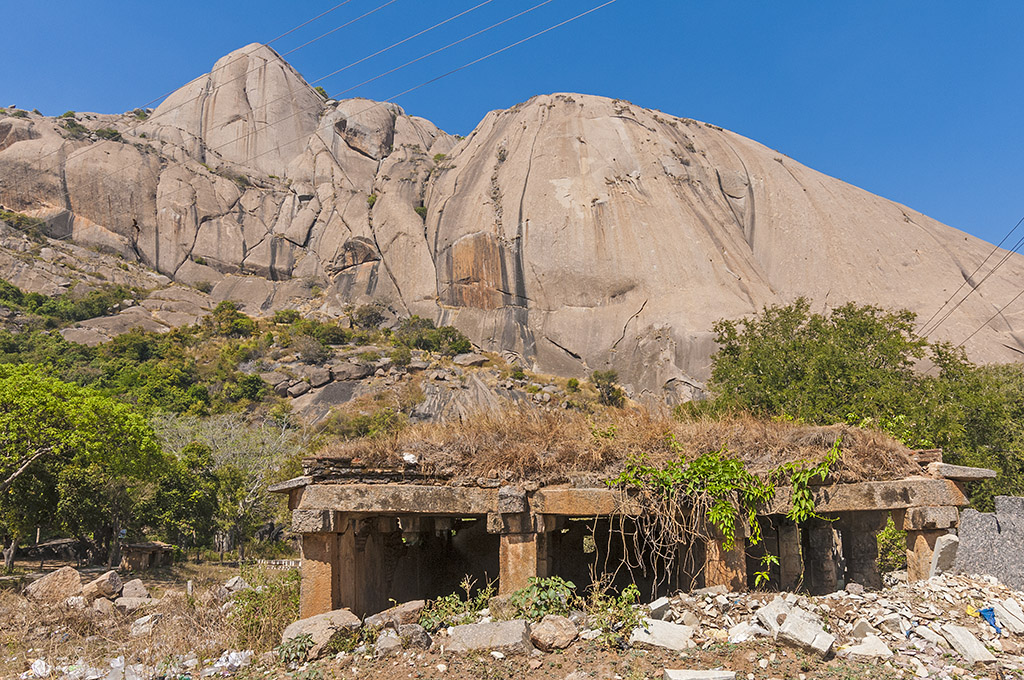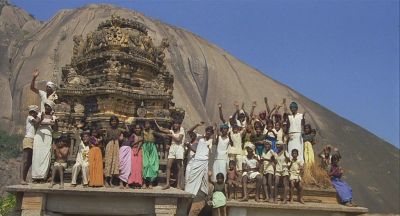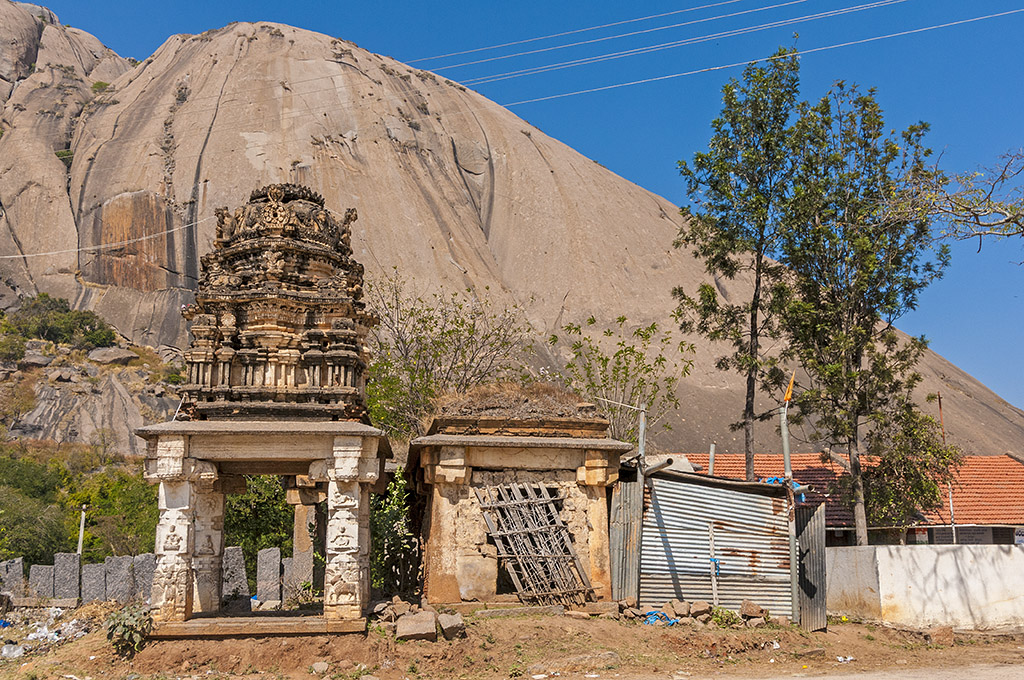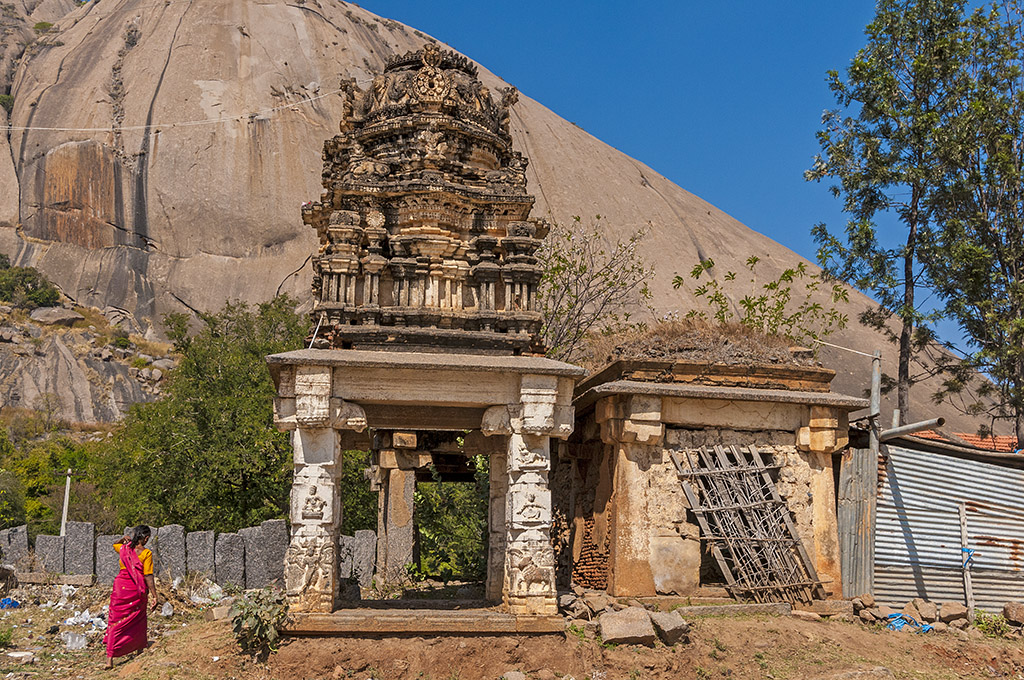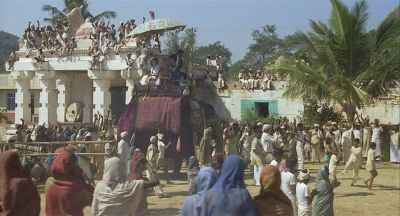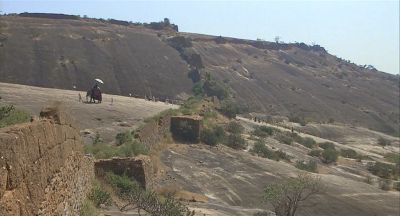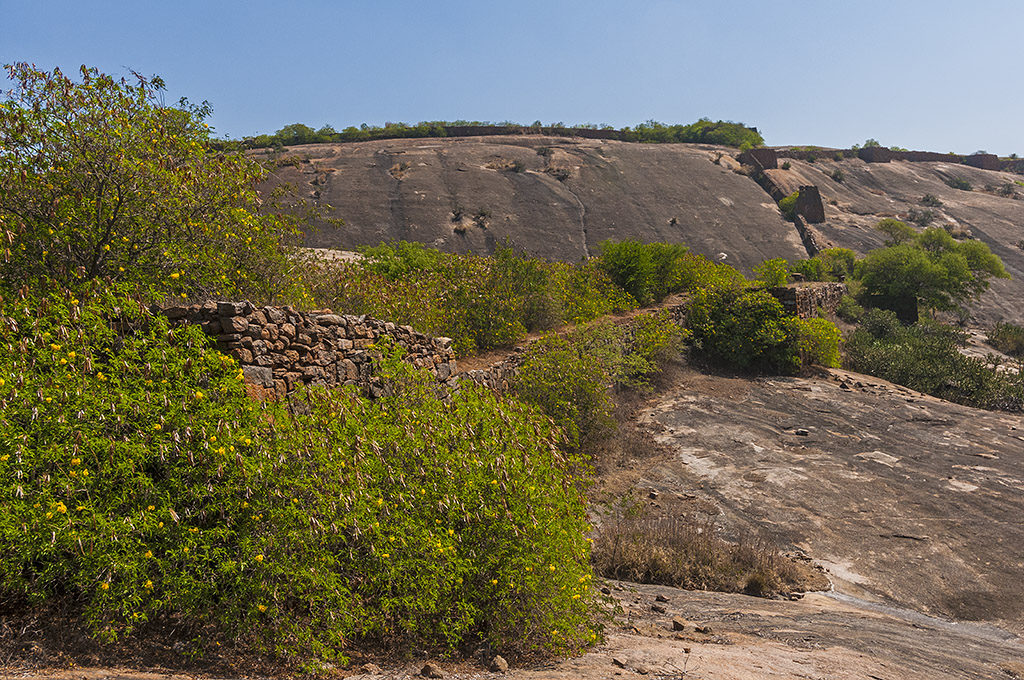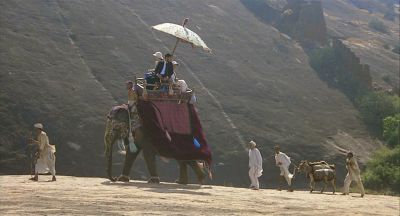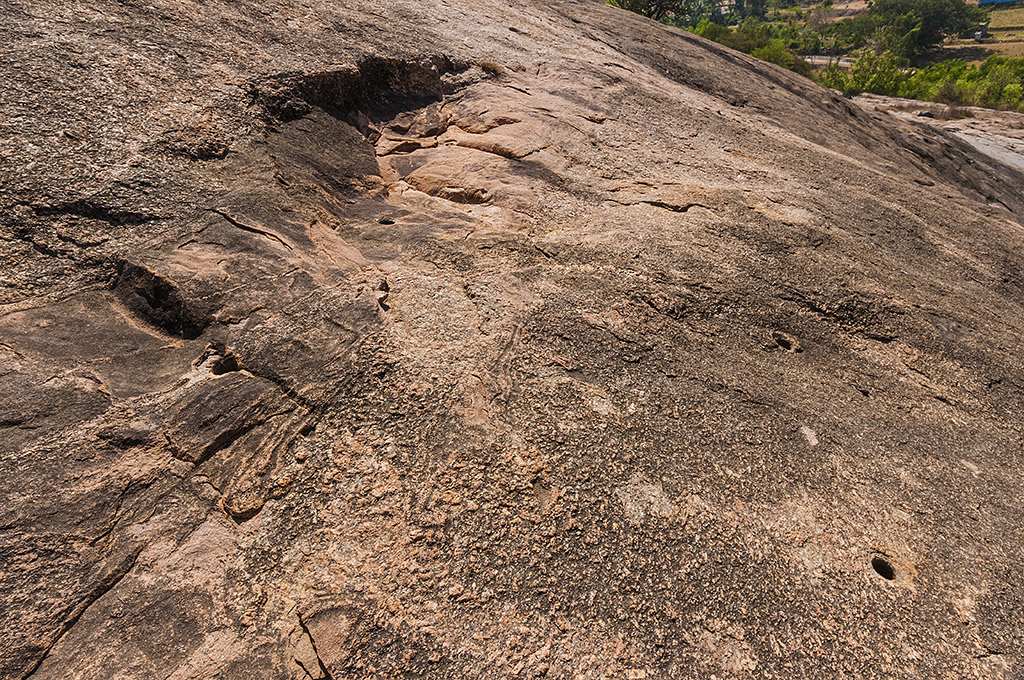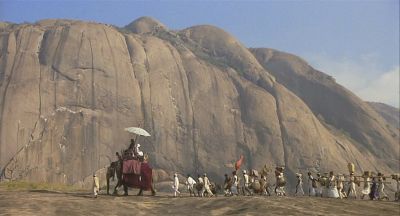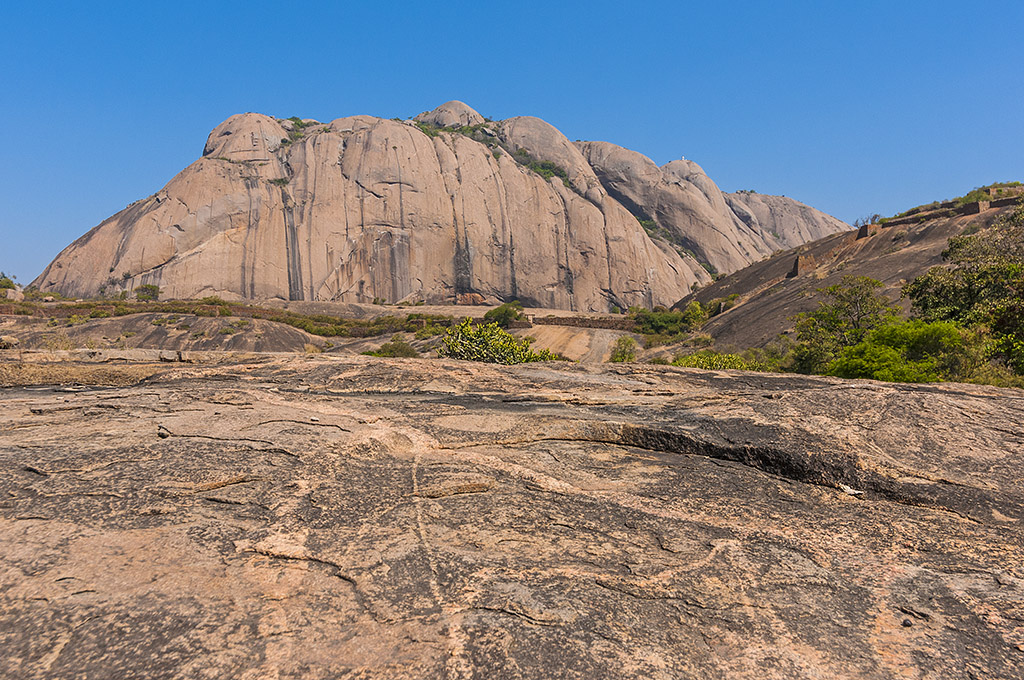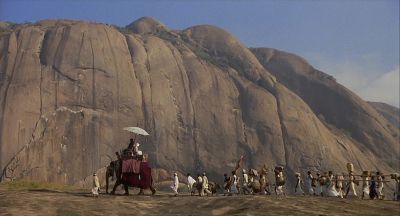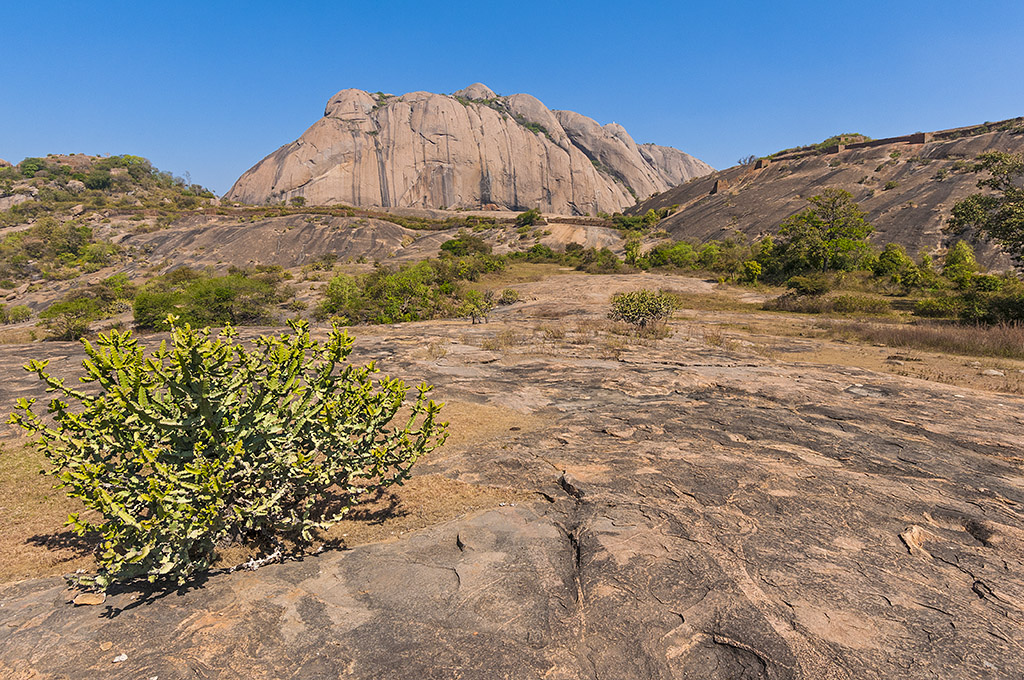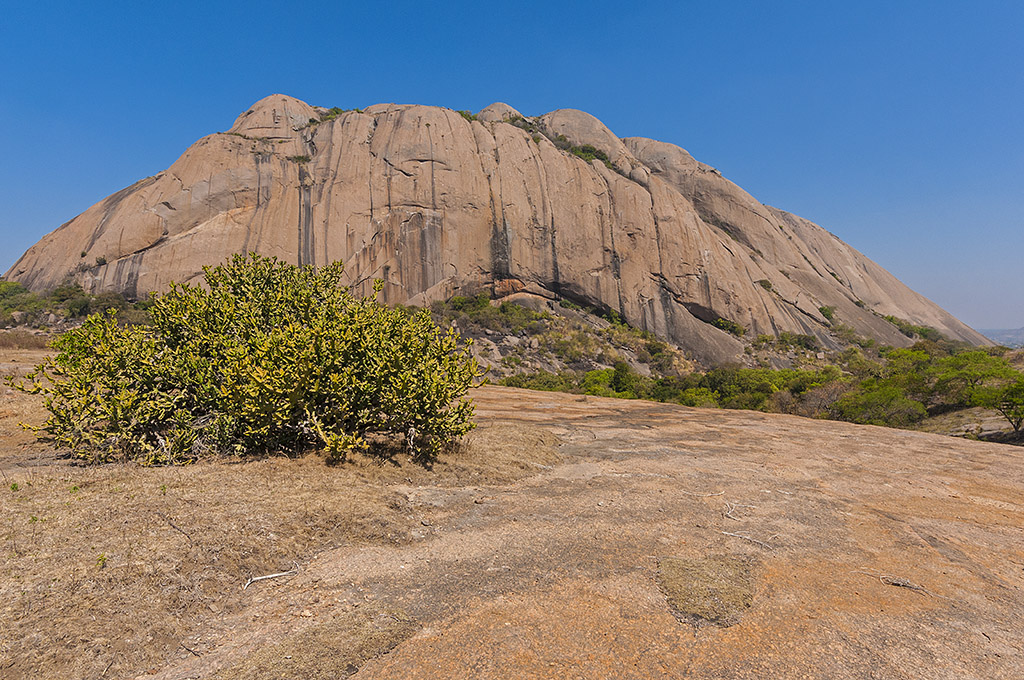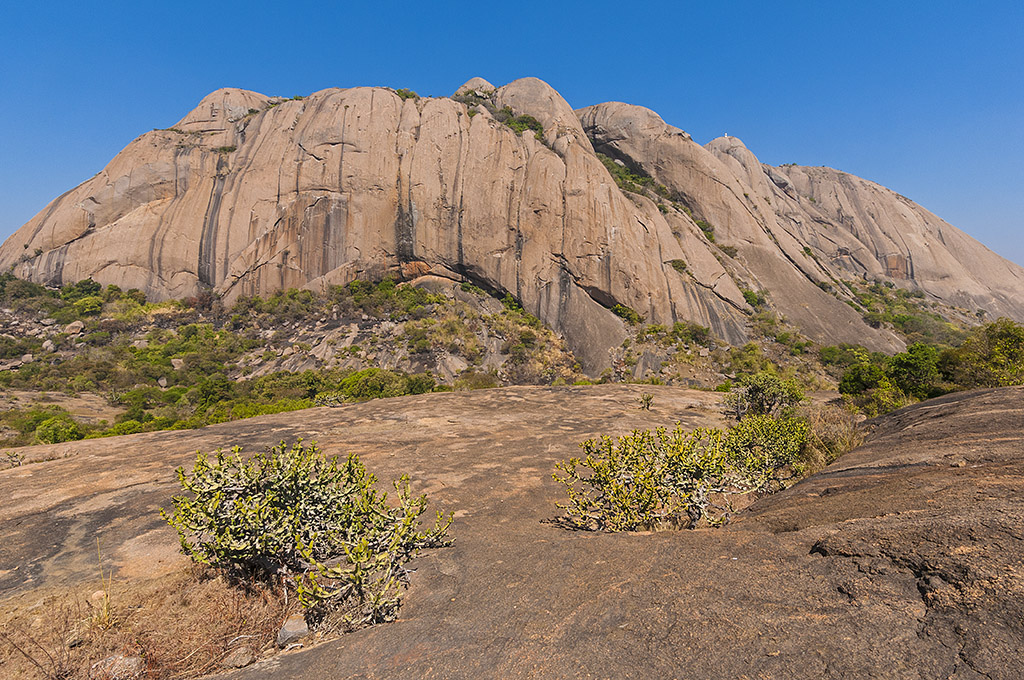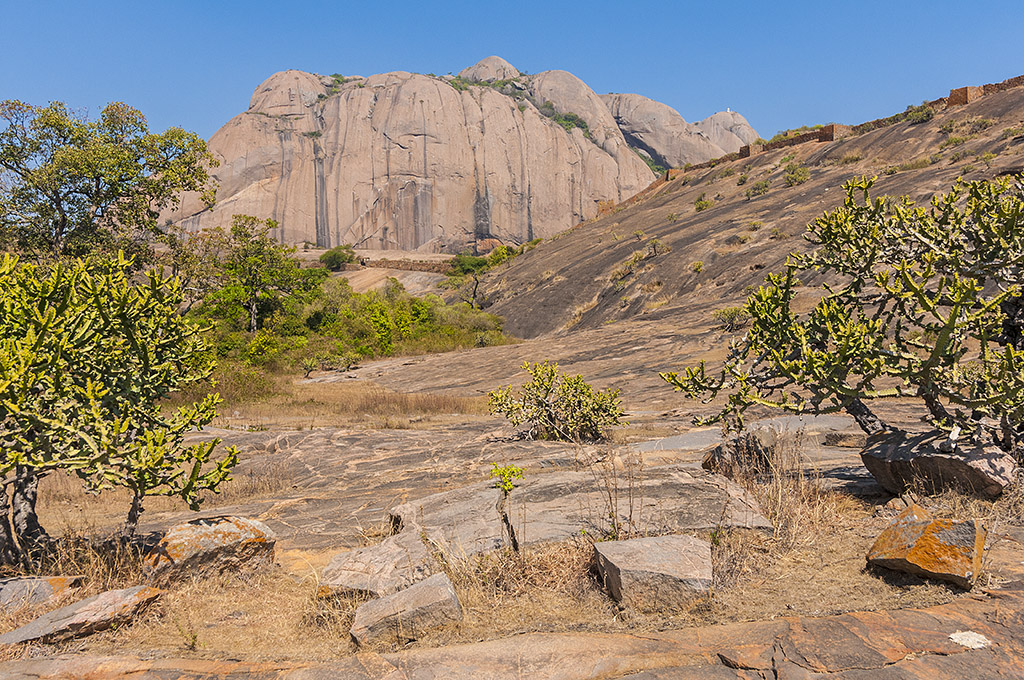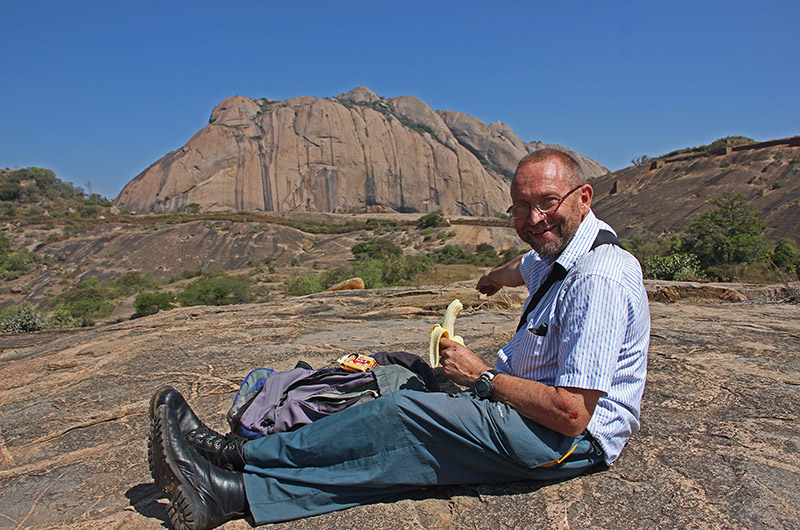The Marabar Caves - page 4 - The Expedition Departs
This page shows images taken at Savandurga during a visit that I made there in 2017. I also visited the sites for the 'Lower Cave', and the 'Upper Caves'.
To recap with the plot: the ill-fated expedition departs early in the morning from Chandrapore Station, filmed at the real station of Coonoor. The resulting train journey is filmed on the NMR line. We do not see the arrival at the destination station (un-named) for the Caves. Instead we see the expedition departing by elephant to the Caves from an un-named village, filmed at the real village of Savandurga.
Here we see the start of the Expedition, as Adela Quested climbs up a ladder to join Dr. Aziz and Mrs. Moore on a howdah, mounted on the back of an elephant, that is to take them to the Lower Cave. This was filmed in the village of Savandurga, at a point marked on the above map as (2) Village Temple. In the background are a number of villagers standing on the roof of a building to watch the proceedings. This building can be see on the left of the next photo.
Here is a closeup of the same building, as it was in January 2017. The coconut palm tree has gone - perhaps it was only brought here for the film? They have a life of 60-70 years.
Waving locals on the roof of a small temple, and adjacent building.
Here are those same two buildings in 2017.
Progressing on through the village, the next shot shows the elephant and riders passing the Sree Lakshmi Narasimha Swamy Temple, which is marked on the above map as number '3'. I forgot to take a photo of it on this trip, though it still looks much the same as it did in the film. There are a lot of locals lining the route of the Expedition in the film. They must have come from far and wide to take part. Savandurga is, in reality, a sleepy little village with few people there these days.
Leaving the village, the Expedition climbs into the hills, crossing the old fort walls on the approach to the Karigudda Hill. These walls, and the track of the Expedition, can be seen at '4' on the above map. According to the Imperial Gazetteer of India, this fort was first built in 1543 by Samantha Raya, an officer under the Vijayanagar Empire. Around 1570, the chief of Bangalore acquired the fort and the Magadi region. The fort was taken by Mysore in 1728. During the time of Hyder Ali, the fort prison was located among the hills. It was said that escaping from the prison was impossible. Hence the fort acquired the nickname Savina Durga, meaning 'the fort of death'. Lord Cornwallis captured the fort in 1791, but it was later abandoned. Today, there is not much left of the fort or its walls.
The expedition appears to be moving north of the walls to get to the Lower Cave. In reality, the site for the Lower Cave is in the opposite direction, at '5' on the map.
We still the elephant plodding slowly over the rocks that form the approach to the Karigudda Hill. In reality, the rock there is quite smooth, and quite steep for an elephant in places. To get the elephant in position, the film crew had to make a ramp that was anchored into the rock by drilling holes for support. You can still see some of these holes in the rock today.
The Expedition elephant, plus servants and accompanying supplies, journey on to the Lower Cave. This image is often used as a cover shot for books or articles about the film.
This is the most likely location used for the covers-shot.
Views of Karigudda Hill. The tiny white Nandi Shrine can just be seen on the second peak from the right.
Now, please visit the next page: 'The Marabar Caves - page 5 - The Lower Cave'.
How To Get There - Savandurga
If you wish to visit Savandurga and the hills yourself, the access road is marked on the above map as '1'. To get there by bus from Bengalaru, you can take the 241M, which stops at both the stops marked '8'. When you have finished checking out the 'A Passage To India' film locations, there are some exciting treks to be attempted. The trails are well marked, though locals can easily be hired to act as guides. From the top, the panoramic view of the surrounding forests is well worth the two and a half hours of trek.

